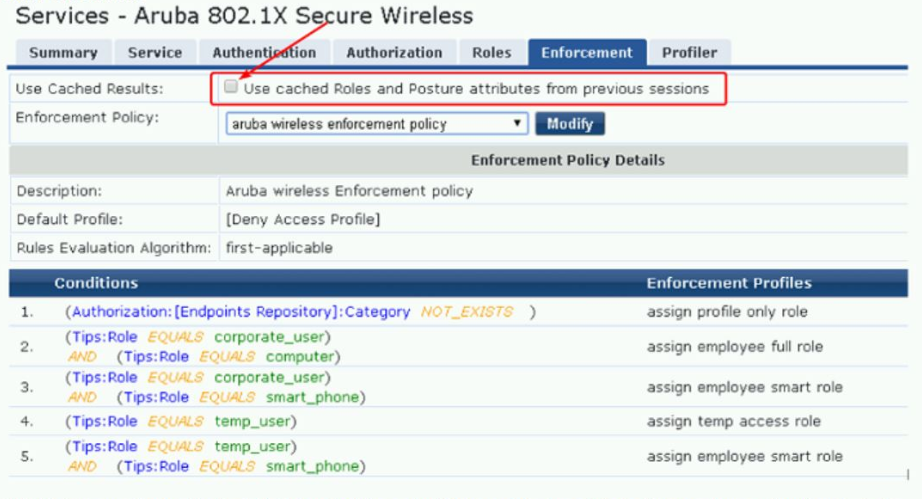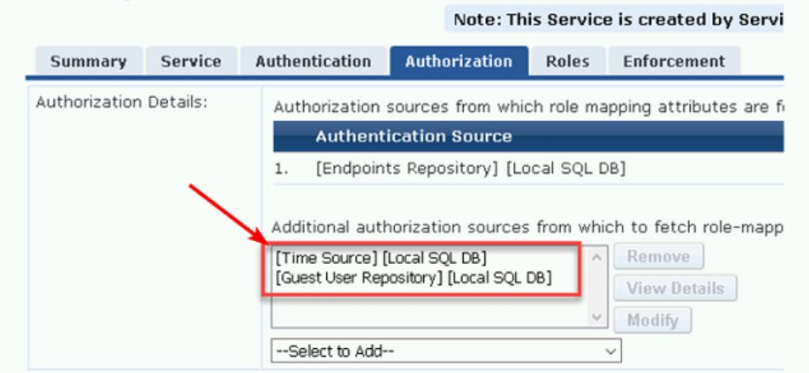HP HPE6-A82 - Aruba Certified ClearPass Associate Exam
Which two are required to add a Network Access Device (NAD) into ClearPass? (Select two.)
Refer to the exhibit.

Which user authentication request will match the service rules of the Policy Service shown?
What are benefits of using Network Device Groups in ClearPass? (Select two.)
Refer to the exhibit.

What is true regarding leaving the indicated option "Use cached Roles and Posture attributes from previous sessions" unchecked?
An organization wants guests to be able to create their own guest accounts for access to the public WLAN Guests do not want to have to repeatedly tog in multiple times through the day Which clearPass feature can meet these requirements?
An organization wants to have guests connect their own personal devices to the wireless network without requiring a receptionist setting up a guest account. Which ClearPass feature can be used to meet the organization's requirements?
Refer to the diagram.

When creating a new ClearPass Service, the [Time Source] has been added as an authorization source. What time source is ClearPass referencing?
What are two ways to add guest accounts to ClearPass? (Select two.)



